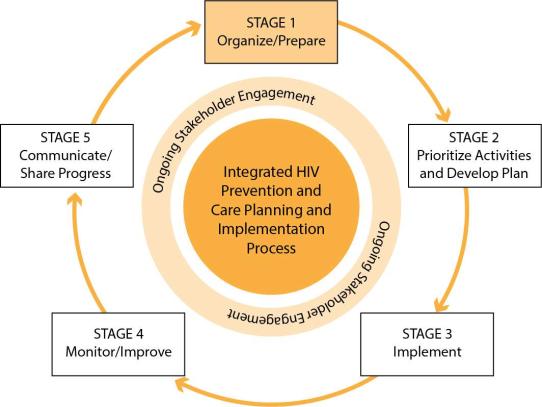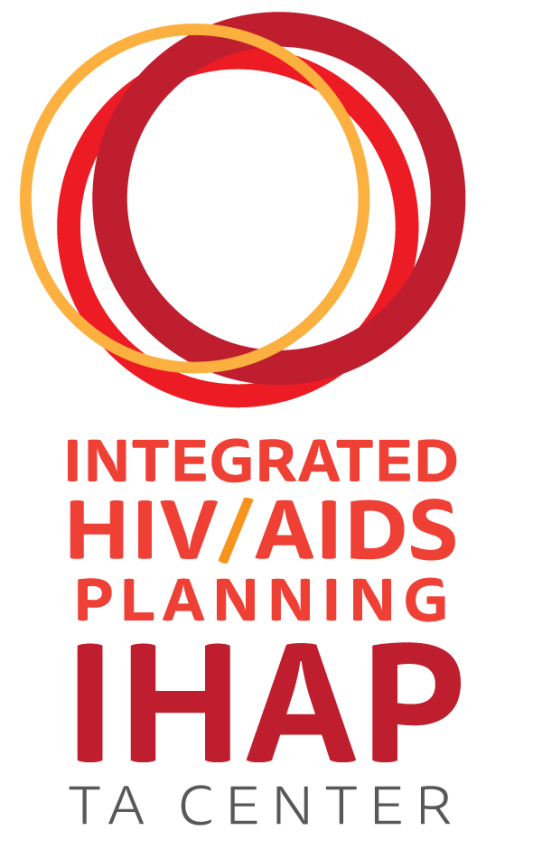
Successful integrated planning depends on establishing a strong foundation. A thoughtful planning process starts with meaningfully engaging community stakeholders and reviewing a jurisdiction’s current context to determine how to move forward. These initial tasks involve establishing collaborative relationships, garnering information about the communities served, and using relevant data to inform plan development.
Promising Practices and Tips
- Establish collaborative relationships, collect information about the communities served, and use relevant data to inform plan development. This includes reviewing existing data and developing a plan to collect new data.
- Effectively engaging community stakeholders relies on routine, open, bidirectional communication that prioritizes diverse perspectives.
- To establish rapport and understand expectations, clarify language, roles, and responsibilities in the planning process.
The tools and resources included below support collaboration, stakeholder engagement, data sharing, and establishing roles and responsibilities for those involved in the planning process.
Tools and Resources
Webinars
-
Gearing Up for Integrated Planning: Approach, Timeline, and Community Engagement (January 2022). During this webinar, the IHAP TAC provided an overview of key steps to undertaking the planning cycle and key components of Sections I and II of the Guidance. Guest speakers from the Arizona Department of Health Services shared examples of how their Integrated Planning process is structured and coordinated and guest speakers from Maryland Department of Health and Iowa Department of Public Health discussed their approach to community engagement.
-
Integrated Planning Activities for Prevention and Care: Best Practices and Lessons Learned (April 2019). This webinar reviewed integrated HIV planning activities. Attendees learned about various models of collaboration and integration, benefits of integrated planning, and potential challenges for jurisdictions. The webinar featured guest presenters from Memphis, TN and San Francisco, CA who shared their jurisdictions' efforts to integrate HIV prevention and care planning activities. They also discussed lessons learned and promising practices.
-
Strategies and Lessons Learned for Consumer and Stakeholder Engagement in Integrated HIV Prevention and Care Planning and Implementation (July 2017). This webinar presented strategies for ongoing consumer and stakeholder engagement in the integrated prevention and care planning, implementation, and monitoring processes. Representatives from two jurisdictions shared lessons learned for successfully engaging consumers and other stakeholder groups. This introductory presentation was intended for RWHAP and CDC prevention Program Managers, recipient staff engaged in planning activities, and planning body members responsible for implementing and monitoring Integrated HIV Prevention and Care Plans.
Resources
-
Six Steps for Agreeing on Roles, Responsibilities, and Structure for Implementing HIV Integrated Prevention and Care Plans (May 2017). This document outlines six steps jurisdictions can take to ease and enhance implementation of Integrated Plan activities.
-
Glossary of Integrated Planning Terms. This resource provides operational definitions of integrated planning and related terms.
-
Stakeholder Engagement Plan (September 2017). This slide deck, developed by the Pennsylvania Department of Health - Division of HIV Disease, provides an overview of the Pennsylvania Department of Health's process for engaging stakeholders in the development of an Integrated HIV Prevention and Care Plan.
-
The HIV Planning Group - Quick Reference Guide (September 2017). This document, developed by the Pennsylvania Department of Health - Division of HIV Disease, outlines the structure and responsibilities of the Pennsylvania HIV Planning Group in relation to the Integrated HIV Prevention and Care Plan.
-
Examples of Collaborative Integrated Prevention and Care Planning Activities. This document, adapted with permission from EGM Consulting LLC, provides five examples of integrated prevention and care planning activities to assist RWHAP Part A and B recipients and CDC’s DHAP funded prevention programs with greater integration of their respective planning bodies.
-
Two models emphasize developing joint communication and data sharing activities.
-
Three models focus on restructuring the actual composition, membership, or operating policies of planning bodies.
-
-
Roles and Responsibilities for Prevention and Care Planning Bodies and Integrated Planning (October 2019). This crosswalk document, adapted with permission from EGM Consulting LLC, provides information on the roles and responsibilities of HRSA HAB and CDC DHAP Planning Bodies in Integrated HIV Prevention and Care Planning and related activities, such as Needs Assessments and Statewide Coordinated Statement of Needs. The information provided is from relevant legislative and regulatory documents that guide and inform the work of these planning bodies.
Workshops
-
Community Engagement in Integrated HIV Prevention and Care Planning and Implementation (2019). This slide set describes strategies that jurisdictions have applied to successfully engage people with HIV and other community members in integrated planning efforts.
Others
- Merging Prevention and Care Planning Groups. This page describes the purpose of HIV planning groups and how integration can take place within a jurisdiction, and provides examples of different approaches to collaborative integrated prevention and care planning activities. Jurisdictions opting for a fully merged planning body can find promising practices and tips to help them through the process.
